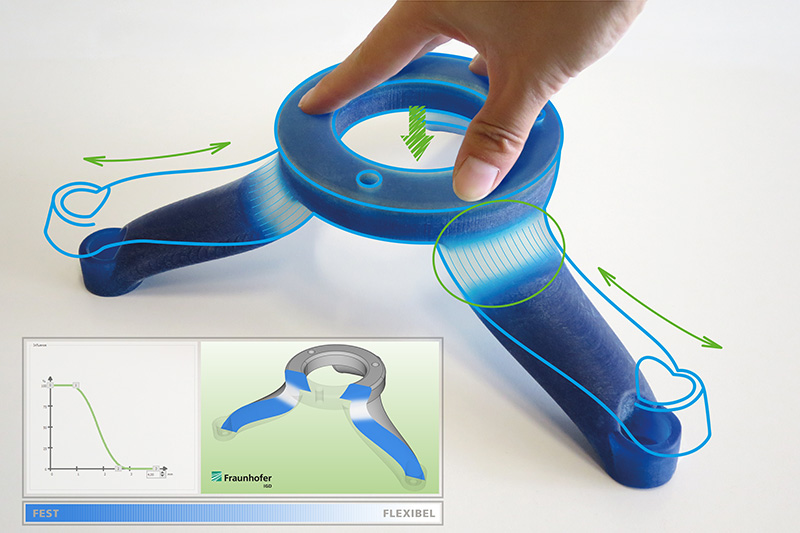Grading of CAD models the elegant, functional and intuitive way
The use of locally varied (graded) materials allows components to be better designed and constructed for their intended purpose, for example by means of multi-material 3D printing. Providing CAD models with locally varying properties is difficult and time-consuming. For this reason, researchers at Fraunhofer IGD have been busy developing a software solution for the elegant and intuitive definition of material gradients on CAD models and thus for the realization of highly complex component specifications. Fraunhofer IGD is organizing a webinar to demonstrate the possibilities and advantages of its GraMMaCAD application. Participation is free of charge.

The GraMMaCAD (Graded Multi-Material CAD) software package designed by the Fraunhofer Institute for Computer Graphics IGD provides industry with a tool to readily and easily enrich CAD models with material distributions and gradients in the virtual product development process.
Providing components with functional gradations has not been an established part of the design process until now because, apart from surface treatment (e.g. hardening), there were hardly any manufacturing processes capable of implementing this. With the arrival of multi-material 3D printing, this is changing. For designers, constructors and 3D printing service providers, however, defining locally varying properties on CAD models is a time-consuming business. There are no elegant solutions for this cumbersome process that facilitate an interactive and intuitive definition of locally varying properties. Current practice is either to divide the model into sub-models, to which different materials are then assigned, or to perform the material assignment based on images (textures) in a preparatory step for 3D printing. The first of these two methods usually only allows discrete material transitions, while the latter requires the gradation to be generated as a variation of the texture information.
The question therefore arises as to how locally varying information about materials can be generated within a virtual three-dimensional component with minimal cost and effort. The challenge is to easily and quickly generate continuous material gradients that follow the geometry using modern multi-material printers. GraMMaCAD can generate volumetric material distributions and material gradients interactively and also offers a graphic-interactive editor that supports this in an elegant and user-friendly way. The starting point is a CAD model that has been configured with a CAD tool of the user’s choice. GraMMaCAD supports numerous common CAD formats, such as STEP, CATIA, JT, Pro/E and SolidWorks.
In the webinar, developer Ms. Thu Huong Luu will present the GraMMaCAD software package as a tool for the simplified definition of material distribution and provide a practice-based explanation of the different approaches to generating material distributions on the CAD model.
Further information:
- Further information on the GraMMaCAD software package (igd.fraunhofer.de)
 Fraunhofer Institute for Computer Graphics Research IGD
Fraunhofer Institute for Computer Graphics Research IGD